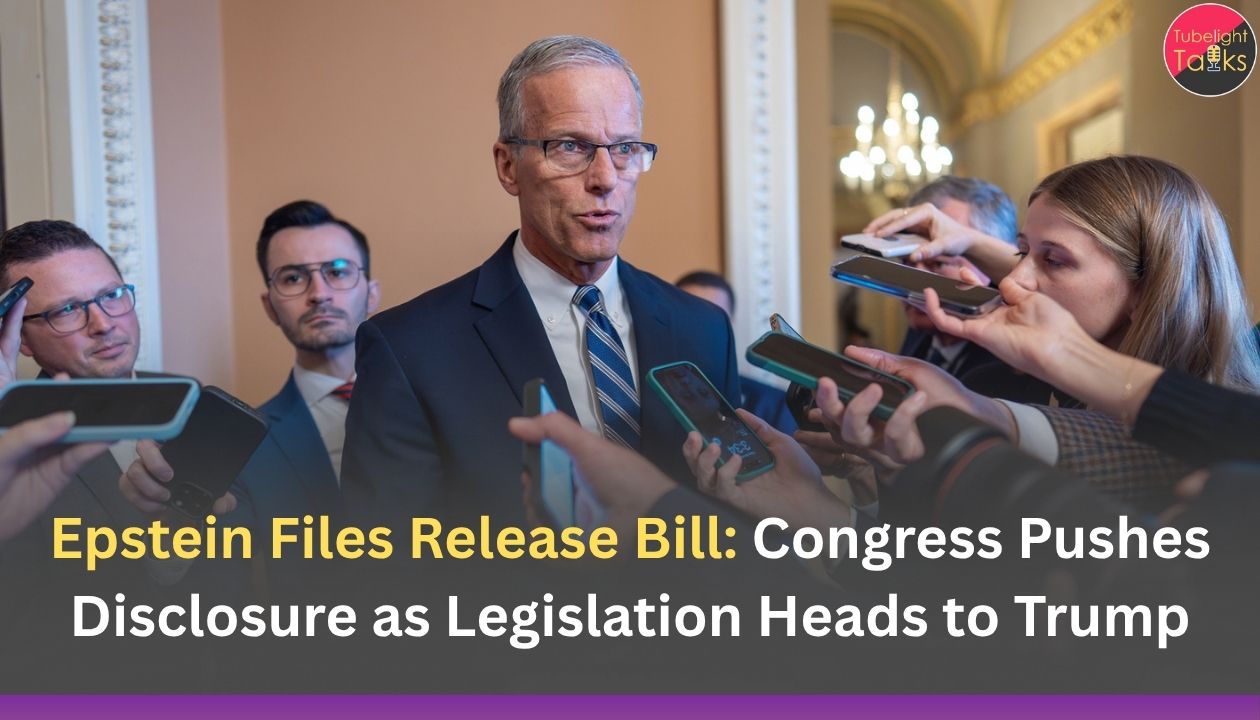Trump Tariff Rollback: Indian farmers and agri exporters, who had been squeezed by steep U.S. tariffs over the past year, finally have some breathing space. U.S. President Donald Trump has removed tariffs on more than 200 food products, reversing part of his “reciprocal tariffs” regime as American consumers complain about rising grocery prices.
For India, the rollback eases pressure on exporters of tea, coffee, spices and cashew nuts, who had been hit harder than their European and Vietnamese competitors after U.S. duties on some Indian goods were doubled to as high as 50%.
Trade bodies estimate that between $2.5 billion and $3 billion of Indian exports could now benefit from the tariff exemptions.
What exactly has Trump rolled back?
According to Reuters, Trump’s latest order removes additional tariffs on over 200 food items, including beef and a range of farm and processed products, as part of a broader attempt to contain food price inflation in the U.S.
Under the earlier “reciprocal tariffs” regime:
- Indian agricultural exports such as tea, coffee, spices and cashew nuts faced sharply higher duties, in some cases up to 50%, making them less competitive than EU or Vietnamese products that were taxed at lower rates of roughly 15–20%.
- A separate punitive levy was also linked to India’s purchases of discounted Russian crude, straining broader trade ties.
The rollback doesn’t scrap U.S. trade pressure entirely, but it removes extra layers of duties on a significant basket of food imports, including many high-value items where India has a presence.
How much does India gain?
Ajay Sahai, Director General of the Federation of Indian Export Organisations (FIEO), told Reuters that $2.5–3 billion worth of Indian exports could benefit from the exemptions, particularly in premium and value-added categories.
Officials and analysts highlight a few key upsides:
- Direct relief for farmers & exporters
- Producers and exporters of tea, coffee, spices, cashews, fruits and vegetables should see improved margins and more stable demand.
- Producers and exporters of tea, coffee, spices, cashews, fruits and vegetables should see improved margins and more stable demand.
- Room for value-added products
- With punitive duties scaled back, exporters can focus more on premium, specialty and branded items, rather than competing only on bulk commodity prices.
- With punitive duties scaled back, exporters can focus more on premium, specialty and branded items, rather than competing only on bulk commodity prices.
- Signal for broader trade talks
- The move is viewed in New Delhi as a positive gesture for ongoing India–U.S. trade discussions after a difficult year marked by tariff hikes and political friction.
- The move is viewed in New Delhi as a positive gesture for ongoing India–U.S. trade discussions after a difficult year marked by tariff hikes and political friction.
The context: exports to the U.S. were already hurting
Even before the rollback, the impact of Trump’s higher tariffs was clearly visible in India’s trade data:
- Exports of Indian goods to the U.S. fell nearly 12% year-on-year in September 2025 to $5.43 billion, according to trade figures cited in the Reuters report.
- Indian farm exports to the U.S. were estimated around $5.7 billion out of roughly $87 billion total exports in 2024—meaning agriculture is a small but important, and politically sensitive, slice of the relationship.
Officials involved in farm export policy told Reuters that the rollback will ease pressure on farmers and exporters who had seen orders and profitability squeezed since tariffs were raised.
Why gains may still be limited
Trade experts caution that while the tariff relief is welcome, India’s upside is not unlimited.
1. Narrow product base
Ajay Srivastava of the Global Trade Research Initiative (GTRI) points out that India’s agri exports to the U.S. are concentrated in a small basket of high-value spices and niche horticulture.
In many major exempted categories tomatoes, citrus fruits, melons, bananas, fruit juices India has only a minor presence, while Latin American and ASEAN producers dominate.
2. Competition and freight costs
Exporters interviewed in the coverage flagged:
- High freight and logistics costs,
- Strong competition from Vietnam, Indonesia and Latin American suppliers,
- Stringent U.S. quality and food safety standards, which raise compliance costs.
As one exporter put it, tariff relief is critical, but real market recovery also depends on logistics and the ability to match global prices and quality.
3. Unclear treatment of some duties
Analysts also note that it’s not yet fully clear whether Indian exports will be exempted from all layers of earlier duties—such as specific 25% “reciprocal” tariffs versus higher combined rates—adding some uncertainty for pricing and contracts.
What this means for Indian farmers on the ground
For farmers growing tea, coffee, spices, cashews and certain fruits and vegetables with export linkages, the rollback offers:
- A better chance of stable orders from U.S. buyers,
- Scope for higher prices if buyers pass on some of the duty savings, and
- Renewed interest from exporters in contract farming or long-term sourcing arrangements.
However, the benefits will be uneven: regions deeply integrated into export value chains—like spice and cashew belts, and tea gardens oriented to the U.S. market—stand to gain more than farmers selling almost entirely into the domestic market.
In the medium term, industry groups say the policy signal should encourage:
- More investment in processing and value addition (roasted coffee, spice blends, ready-to-drink teas),
- Better traceability and quality systems, and
- Closer alignment with evolving U.S. food safety norms.
Fair trade, karmic balance and farmer dignity
From a Satgyan perspective, as explained by Sant Rampal Ji Maharaj, this development is more than a technical trade adjustment – it raises deeper questions about humidity in our economic choices.Trump’s rollback is motivated largely by relief for U.S. consumers facing high grocery bills, but it also inadvertently reduces pressure on small farmers in exporting countries like India.
A Dharmic trade system would consciously design policies that do not sacrifice vulnerable farmers at home or abroad for short-term political gain. When tariffs rise suddenly, the real burden often falls on farmers and workers at the bottom of the value chain, not on large corporates.
Satgyan reminds us to speak and act with truth: acknowledging that seemingly “technical” tariff decisions can push some families into distress or debt, and that such hidden suffering also has a karmic cost. Compassion in policy means using trade tools to support stable, dignified livelihoods, not to trigger boom-and-bust cycles that farmers cannot control.
Over the long run, both India and the U.S. have a responsibility to build trade arrangements that respect the dignity of food producers, ensure fair prices, and avoid exploiting labour and nature for short-term electoral or corporate benefit.
Seen through this lens, the current tariff rollback is a welcome corrective, but true alignment with Dharma will require predictable, fair-minded trade policies that keep farmers’ welfare at the centre—not just when inflation becomes a political headache.
Read Also: Asia Faces Trade Barrier Test as Supply Chains Come Under Pressure
FAQs: US President Trump Tariff Rollback Extra Tariff
1. What has Trump changed in this tariff rollback?
He removed extra tariffs on 200+ food items, reducing duties on products like beef and many farm/processed foods exported by India and others.
2. Which Indian products benefit most?
Tea, coffee, spices, cashews, and select fruits and vegetables that previously faced sharply increased U.S. duties.
3. How big is the gain for India?
An estimated $2.5–3 billion in Indian exports may benefit, especially higher-value specialty products.
4. Why are the benefits considered limited?
India’s export base is narrow, faces strong competition, high freight costs, and strict U.S. quality standards.
5. What does this mean for India–U.S. trade relations?
It signals improved trade atmospherics and opens space for broader negotiations, though major disputes remain unresolved.










